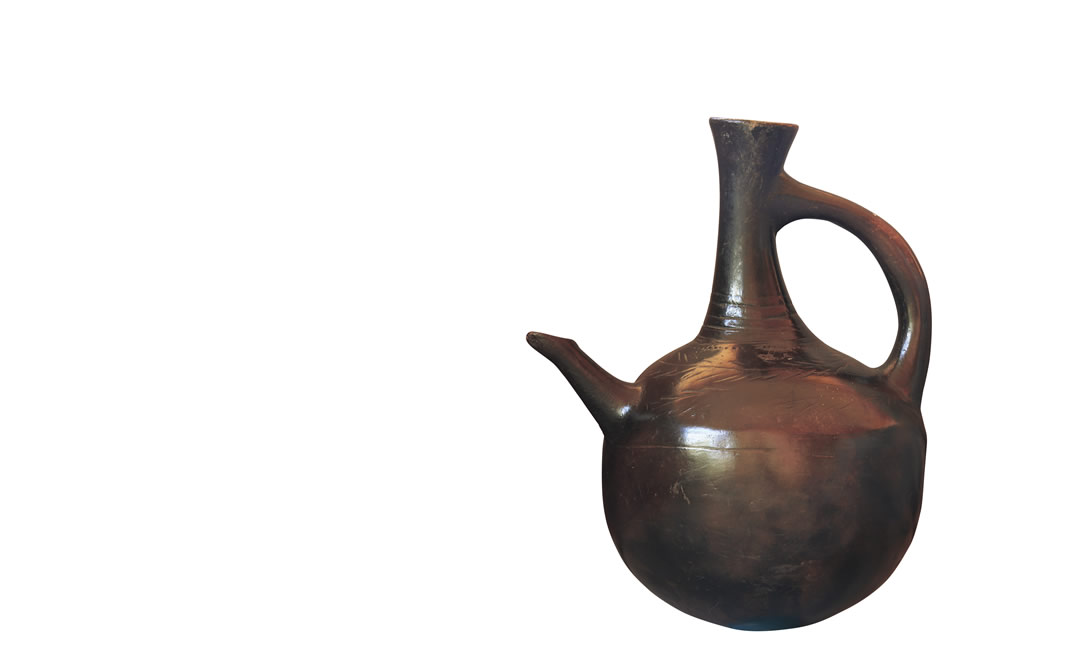Short history of coffee machines for home use
In its countries of origin, Ethiopia and the Yemen, and other countries in the near East, the very first coffee was prepared using the whole berry or 'cherry' picked from the plant and quite simply ground. Later, however, only the grains or green 'beans' inside the cherry were used.
It is believed that the green or 'raw' grains were not toasted until the end of the 18th century. Nevertheless, the drink was still prepared by boiling whole toasted beans.
The next step was to reduce the toasted beans to a powder using a mortar and boil the powder created in this way in the water along with honey, aromas or various kinds of spices. The infusion was consumed as soon as part of the grounds had sunk to the bottom of the cup.
It is believed that the green or 'raw' grains were not toasted until the end of the 18th century. Nevertheless, the drink was still prepared by boiling whole toasted beans.
The next step was to reduce the toasted beans to a powder using a mortar and boil the powder created in this way in the water along with honey, aromas or various kinds of spices. The infusion was consumed as soon as part of the grounds had sunk to the bottom of the cup.
The first 'tools' used to prepare coffee - from roasting pans and cylinders to mortars and grinders for turning toasted beans into a powder - appeared towards the middle of the 17th century. The first coffee makers were then produced in copper and brass and finely chiselled and decorated in a range of different forms: cone-shaped, bulbiform or pot bellied amphora. From Turkey to Syria, from Tunisia to Morocco, coffee was prepared using Ibrik, Cezve, Dellel or Rakwa coffee makers.
Coffee also arrived in Europe during the same period and the way it was prepared in homes reflected that of the countries of origin. Tinplate coffeepots and jugs or more refined copper, brass, pewter or silver Samovars were used. The boiling system produced a rather thick, bitter drink which left the residue of the grounds in the drinker's mouth. These characteristics, along with the high cost of the product, did not arouse enthusiasm in the Old Continent and most certainly did not encourage the consumption and spread of coffee.
Coffee also arrived in Europe during the same period and the way it was prepared in homes reflected that of the countries of origin. Tinplate coffeepots and jugs or more refined copper, brass, pewter or silver Samovars were used. The boiling system produced a rather thick, bitter drink which left the residue of the grounds in the drinker's mouth. These characteristics, along with the high cost of the product, did not arouse enthusiasm in the Old Continent and most certainly did not encourage the consumption and spread of coffee.
This was the beginning of a good three centuries of inventions, tests and alterations, on a quest to find the right system for preparing coffee, so that all the aroma of the toasted coffee bean would remain intact and harmonised in the cup to drink.
However, given the poor chemical, physical and organoleptic knowledge of the product, preparing a good cup of coffee was highly complex, especially taking into account the many variables involved in preparing it. These included the quality of the raw bean; roasting evenness and times; preservation; type and degree of grinding; quality, temperature and water pressure; infusion times; ratio of water to ground coffee.
However, given the poor chemical, physical and organoleptic knowledge of the product, preparing a good cup of coffee was highly complex, especially taking into account the many variables involved in preparing it. These included the quality of the raw bean; roasting evenness and times; preservation; type and degree of grinding; quality, temperature and water pressure; infusion times; ratio of water to ground coffee.
“What MUMAC means to me is that an 18 year old’s dream which began in a small open air market has come true and still lives on today.”
Enrico Maltoni, Collector
Enrico Maltoni, Collector

© Collezione Enrico Maltoni | All rights reserved
P.Iva 03157790407 Privacy & Cookie Policy - Cookie preferences
info@espressomadeinitaly.com
P.Iva 03157790407 Privacy & Cookie Policy - Cookie preferences
info@espressomadeinitaly.com
Credits TITANKA! Spa








 (0)
(0)















